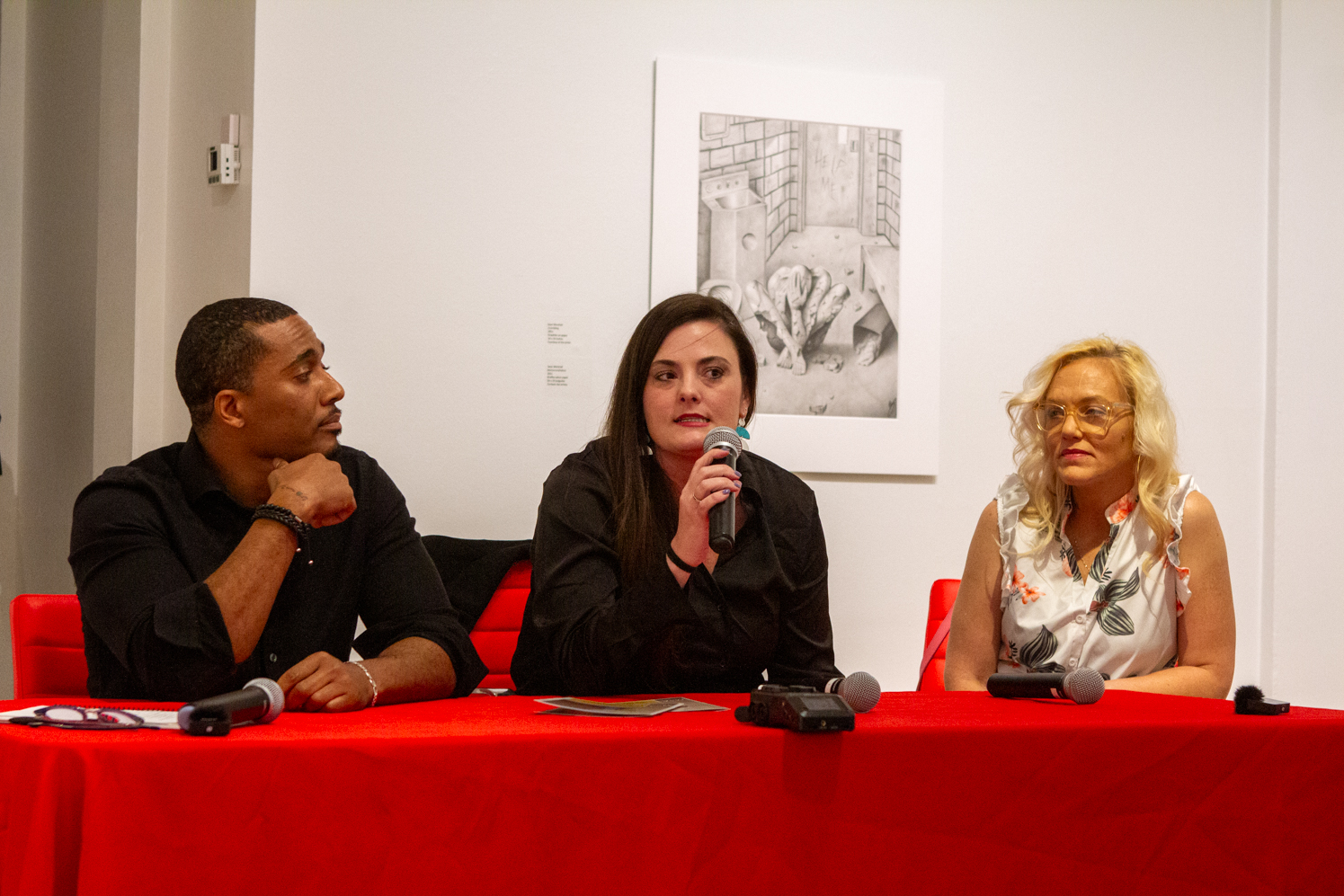The unveiling of two new exhibitions at the Fort Collins Museum of Art on January 26 provided a unique insight into life behind bars.
One of the exhibits, titled “ppp[1],” showcases works created by individuals connected to the ppp[2].
A panel discussion was held on February 8 at the MoA to delve into the art displayed and shed light on the United States justice system. The panel comprised Sarah McKenzie, Shawna Hockaday, Sean Marshall, and Ashley Hamilton, drawing a crowd of proud family members and inquisitive Fort Collins locals.
Sarah McKenzie, a former associate professor at the Cleveland Institute of Art, now instructs graphite and color pencil drawing as part of the Prison Arts Initiative. Reflecting on her transition from a museum architecture project to focusing on prison architecture, McKenzie contemplated the similarities between museums and prisons as institutional spaces, prompting her exploration into the dynamics of such environments.
Engaging with individuals experiencing incarceration spaces, McKenzie’s involvement with the DU PAI led to teaching opportunities that paved the way for her prison architecture project.
Shawna Hockaday, a student in McKenzie’s class and a former inmate, found solace and expression through art during her incarceration. Her poignant journey of rediscovering freedom and healing through artistic endeavors resonates deeply with her personal experiences.
Sean Marshall, another artist with a history of incarceration, emphasizes the transformative power of art in his life. His evolution from creating dark, introspective pieces in prison to producing art that inspires and uplifts reflects his journey towards healing and purpose.
Ashley Hamilton, the co-founder of DU PAI, embarked on a mission to infuse creativity and light into correctional facilities through art education. Her dedication to teaching within the prison system underscores the transformative impact of artistic expression on individuals behind bars.
The second exhibition, “ppp[3],” curated by artist Henry Hargreaves, presents a thought-provoking photo documentary project reimagining the final meals of male death row inmates. Hargreaves, a food photographer from New Zealand, offers an outsider’s perspective on the complexities of the American justice system, particularly the death penalty, through his evocative visual narrative.
Henry Hargreaves’ artistic endeavor aims to humanize the individuals behind the statistics of death row inmates, sparking contemplation and dialogue on the ethical implications of capital punishment.
